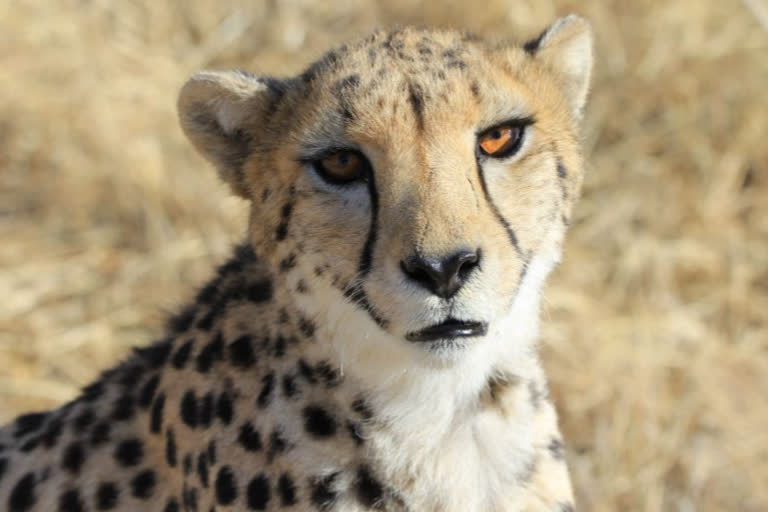New Delhi: Did you know that a cheetah can clock a distance of 100 metres in just three seconds, faster than most cars, but cannot maintain its top speed for more than half a minute? To put things in perspective, the world's fastest man and Olympic champion Usain Bolt's top speed is 44.72 kmph. As Prime Minister Narendra Modi is set to release eight cheetahs brought from Namibia in Madhya Pradesh's Kuno National Park, here are some facts about the animal.
Delhi-based wildlife journalist and writer Kabir Sanjay says the animal is known for its stunning speed and not for stamina. "The cheetah is a sprinter and not a marathon runner. Since it cannot sustain speed chases for long, it must catch the prey in 30 seconds or less. If the cheetah fails to make a kill quickly, it gives up. Hence, it has a dismal hunting success rate of 40 to 50 percent," he says.
Even the cheetah gets its prey, it usually becomes exhausted after chasing and has to rest for quite a while. This is the reason why other carnivores, like leopards, hyenas and wild dogs, often rob its prey. Even vultures can chase the cheetah away. It does not have the same power and strength as other big cats, Sanjay says in his book 'Cheetah: Bharatiya Janglon Ka Ghum Shehzada'.
The senior journalist says the animal's body is designed for speed: large lungs and nostrils to take in a lot of oxygen and an oversized heart to quickly pump a lot of blood containing oxygen around its body. Cheetahs have a slim, flexible body with a softer spine that can bunch and spread like a coil; a small head which reduces air resistance, and long, thin legs which help them take bigger strides.
Cheetahs' foot pads are hard and less rounded than the other cats. The pads function like tire treads providing them with increased traction in fast, sharp turns, according to the Namibia-headquartered non-profit Cheetah Conservation Fund (CCF), which is coordinating with the Indian government to reintroduce the animal in the country.
Their long muscular tail works like a rudder, stabilising, and acting as a counterbalance to its body weight. Swinging the tail continually adjusting to the movement of prey allows for sudden sharp turns during high speed chases. The species has distinctive black tear stripes running from the eyes to the mouth.
The stripes protect the eyes from the sun's glare. It is believed that cheetahs have the same function as a rifle scope, helping them focus on their prey at a long distance, the CCF says. Unlike other big cats, cheetahs are active during the day -- they hunt in early morning and late afternoon. Their prey includes gazelles, antelopes, birds, hares and rodents. They generally prey upon wild species and avoid hunting domestic livestock. However, sick or injured and old or young or inexperienced cheetahs may hunt livestock too, says Saurabh Vashishtha, range officer at the Delhi zoo.
Lone adult cheetahs hunt every two to five days. They need to drink water every three or four days. He says female cheetahs lead solitary lives. They only pair up to mate and then stick with their cubs while raising them. Males are usually solitary, but brothers will often live in groups called coalitions and hunt together.
Cheetahs spend most of their time sleeping and they are minimally active during the hottest parts of the day. Unlike other big cats, including lions, tigers, leopards, and jaguars, cheetahs don't roar. They growl when there is danger, and usually only chirp, purr and meow. The gestation period for a cheetah is just 93 days, and the litter could include up to six cubs.
Their average lifespan in the wild is 10-12 years. In captivity, they can live for 17 to 20 years, Vashishtha says. Cub mortality is higher in protected areas like national parks and wildlife reserves where proximity to large predators is greater than in non-protected areas. Only one in 10 cubs survives in such areas during the first few months. (PTI)



